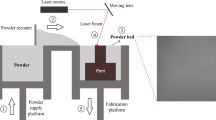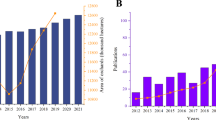Abstract
This work presents a system designed to detect printing errors and misidentifications on steel coils that could lead to tracking problems and even guide to the delivery of the wrong product to the final client. An optical character recognition system is proposed to extract the printed identification of steel coils from images captured by a fixed camera in an industrial environment. The method considers different digital image processing techniques to deal with the significant lighting and printing variation observed, followed by a segmentation process that extracts and aligns the characters originally printed in an arch form, ending with a classification routine based on a convolutional neural network. The proposed system presents an approach to treat lighting variations in images, covering low contrast, darker and brighter images. Experiment carried out on a data set with approximately 20,000 images achieved an accuracy higher than 98%, supporting the validity of the proposed method.










Similar content being viewed by others
Notes
The code is available at https://github.com/thaiscaldeira/steel-coil-ocr
References
Achieving 90% accuracy in Object Recognition Task on CIFAR-10 Dataset with Keras: Convolutional Neural Networks. URL: https://appliedmachinelearning.blog/2018/03/24/achieving-90-accuracy-in-object-recognition-task-on-cifar-10-dataset-with-keras-convolutional-neural-networks/. Accessed 04 May 2019.
Baig, F., Beg, S., Khan, M. F., & Nawaz, S. J. (2015). A method to control home appliances based on writing commands over the air. Journal of Control, Automation and Electrical Systems, 26(4), 421–429.
Brewer, A., Sloan, N., & Landers, T. L. (1999). Intelligent tracking in manufacturing. Journal of Intelligent Manufacturing, 10(3–4), 245–250.
Charpentier, P., & Véjar, A. (2014). From spatio-temporal data to manufacturing system model. Journal of Control, Automation and Electrical Systems, 25(5), 557–565.
El Harraj, A., & Raissouni, N. (2015). Ocr accuracy improvement on document images through a novel pre-processing approach. Signal & Image Processing : An International Journal (SIPIJ), 6(4), 1–18.
Five powerful CNN architectures. URL: https://medium.com/datadriveninvestor/five-powerful-cnn-architectures-b939c9ddd57b. Accessed 04 May 2019.
Gonzalez, Rafael C., & Woods, Richard E. (2007). Digital image processing (3rd ed.). London: Pearson.
Hamad, K. A., & Kaya, M. (2016). A detailed analysis of optical character recognition technology. International Journal of Applied Mathematics, Electronics and Computers (IJAMEC), 4, 244–249.
Islam, N., Islam, Z., & Noor, N. (2016). A survey on optical character recognition system. Journal of Information & Communication Technology (JICT), 10(2), 1–4.
Liu, H., Gao, W., Miao, J., Zhao, D., Deng, G., & Li, J. (2001). Illumination compensation and feedback of illumination feature in face detection. In Proceedings of IEEE International Conferences on Info-tech and Info-net, vol. 23, pp. 444–449.
Liukkonen, M., & Tsai, T.-N. (2016). Toward decentralized intelligence in manufacturing: Recent trends in automatic identification of things. The International Journal of Advanced Manufacturing Technology, 87(9–12), 2509–2531.
MEPS—world carbon steel prices–\$US/metric ton. URL: http://www.meps.co.uk/World. Accessed 04 May 2019.
Modi, H., & Parikh, M. C. (2017). A review on optical character recognition techniques. International Journal of Computer Applications, 160(6), 20–24.
Mudhsh, M. A., & Almodfer, R. (2017). Arabic handwritten alphanumeric character recognition using very deep neural network. Information, 8, 1–14.
OpenCV2: Template Matching Documentation. URL: https://docs.opencv.org/3.0-beta/doc/py_tutorials/py_imgproc/py_template_matching/py_template_matching.html. Accessed 04 May 2019.
Otsu, N. (1979). A threshold selection method from gray-level histograms. IEEE Transactions on Systems, Man, and Cybernetics, 9(1), 62–66.
Pal, K. K., & Sudeep K. S. (2016). Preprocessing for image classification by convolutional neural networks. In IEEE international conference on recent trends in electronics, information & communication technology (RTEICT), pp. 1778–1781.
Pangestu, P., Gunawan, D., & Hansun, S. (2017). Histogram equalization implementation in the preprocessing phase on optical character recognition. International Journal of Technology, 5, 947–956.
Sahu, N., & Sonkusare, M. (2017). A study on optical character recognition techniques. The International Journal of Computational Science, Information Technology and Control Engineering (IJCSITCE), 4(1), 1–14.
Smith R. (2007). An overview of the Tesseract OCR engine. In Ninth international conference on document analysis and recognition, 2007. ICDAR 2007., (vol. 2, pp. 629–633). IEEE.
Wang, Xiuying, Yu, Shengping, Zheng, Binglin, & Chai, Tianyou (2006). Intelligent scheduling system of steelmaking and continuous casting based on ERP/MES/PCS. In The sixth world congress on intelligent control and automation, 2006. WCICA 2006, (vol. 2, pp. 7381–7384). IEEE.
Wick, C., Reul, C., & Puppe, F. (2018). Calamari—a high-performance tensorflow-based deep learning package for optical character recognition. Computing research repository (CoRR)—arXiv, pp. 1–12.
Yang, C.-S., & Yang, Y.-H. (2017). Improved local binary pattern for real scene optical character recognition. Pattern Recognition Letters, 100, 14–21.
Yim, J., & Sohn K.-A. (2017). Enhancing the performance of convolutional neural networkson quality degraded datasets. Computing research repository (CoRR)—arXiv, pp. 1–8.
Zhao, Q.-J., Cao, P., & Tu, D.-W. (2014). Toward intelligent manufacturing: Label characters marking and recognition method for steel products with machine vision. Advances in Manufacturing, 2(1), 3–12.
Acknowledgements
The authors thank ArcelorMittal Tubarão for supporting and making available the images used in this work. Patrick Marques Ciarelli thanks the partial funding of his research work provided by CNPq (Grant 312032/2015-3).
Author information
Authors and Affiliations
Corresponding authors
Additional information
Publisher's Note
Springer Nature remains neutral with regard to jurisdictional claims in published maps and institutional affiliations.
Rights and permissions
About this article
Cite this article
Caldeira, T., Ciarelli, P.M. & Neto, G.A. Industrial Optical Character Recognition System in Printing Quality Control of Hot-Rolled Coils Identification. J Control Autom Electr Syst 31, 108–118 (2020). https://doi.org/10.1007/s40313-019-00551-1
Received:
Revised:
Accepted:
Published:
Issue Date:
DOI: https://doi.org/10.1007/s40313-019-00551-1




